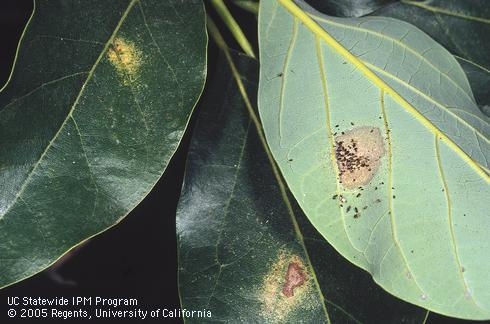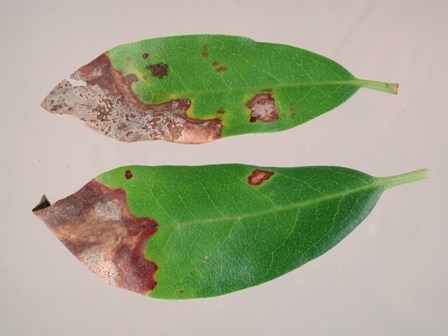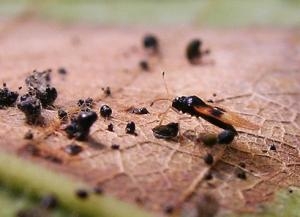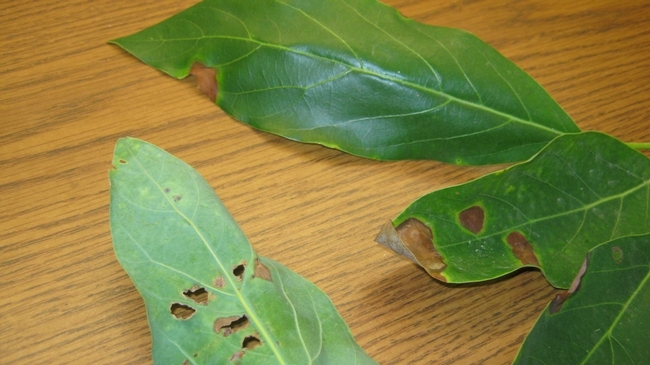On October 5, 2017, the California Avocado Commission (CAC) was alerted to a possible infestation of avocado lace bug (ALB; Pseudacysta perseae) in commercial avocado groves in Oceanside and De Luz, San Diego County. UCR's Mark Hoddle confirmed the infestation. During his survey, Hoddle found all life stages of ALB in groves in both locations, indicating a well-established, reproducing population.
Avocado Lace Bugs are an introduced (who did it?) pest that was found in San Diego in 2004. Previously in the US, it had only been found in Florida. Their impact of avocados can be minor, or with explosive growth can cause significant defoliation. ALB has been known to be established in southern San Diego County for about 15 years, but only on backyard avocado trees. It appears that this is the first infestation of this pest in commercial groves.
Feeding damage occurs near mid-vein on lower leaf surface and appears as a yellow halo on the upper leaf surface.
Lace bugs restrict their feeding to the undersides of leaves, inserting their needle-like mouthparts into leaf tissue cells to extract cell contents. Feeding initially causes small white or yellow spots on the surface of the leaves as individual cells dry out. It is suspected that feeding damage can provide entrance for pathogenic fungi, in particular Colletotrichum spp., which are leaf anthracnose fungi. As lace bug colonies grow, brown necrotic (dead) areas develop where there has been heavy feeding damage. These necrotic areas look like tip-burn caused by salt damage, but in this case, the necrotic areas are islands of dead tissue in the interior of the leaf surrounded by living tissue. Heavy feeding can cause striking leaf discoloration and early leaf drop.Other signs of lace bugs are dark, varnish-like excrement and shed white nymphal skins on the undersides of leaves. Avocado lace bug nymphs and adults do not feed on fruit
Avocado lace bugs have only been reported feeding on avocado, red bay, and camphor, all members of the Lauraceae family. Experimental evidence from Florida indicates that avocado varieties vary in their susceptibility to feeding damage. West Indian x Guatemalan avocado hybrids appear to be particularly resistant to attack in Florida. Observations in the Dominican Republic indicate that Hass avocados (a Mexican-Guatemalan hybrid) can be severely damaged by lace bug outbreaks with occasional severe infestations causing defoliation and reduced yields.
It's important that we all keep our eyes open for this pest. It can easily be confused with salt burn or leaf blight damage, though. Looking for the insect which can be present all year round, the excrement pellets and the unusual yellow halo feeding symptom on the upper leaf surface are all good indicators that the insect is there. Leaf Blight fungus on the other hand has dead spots that appear on both upper and lower leaf surfaces and have wave effect as the fungus spread beyond the point of origin.
For complete details on identification, life cycle and management, you are encouraged to visit the UC IPM ALB webpage (http://ipm.ucanr.edu/PMG/PESTNOTES/pn74134.html).
Look for adults and excrement pellets
Leaf Blight caused by Botryosphaeria sp.
Attached Images:



